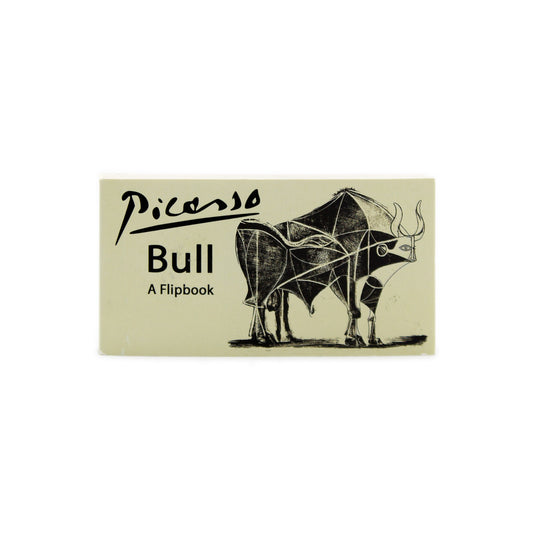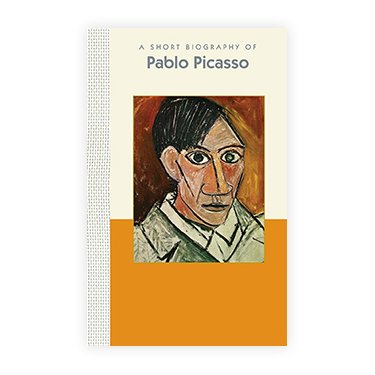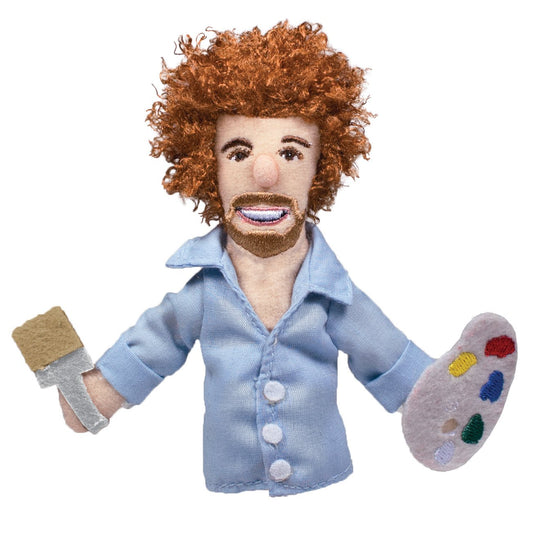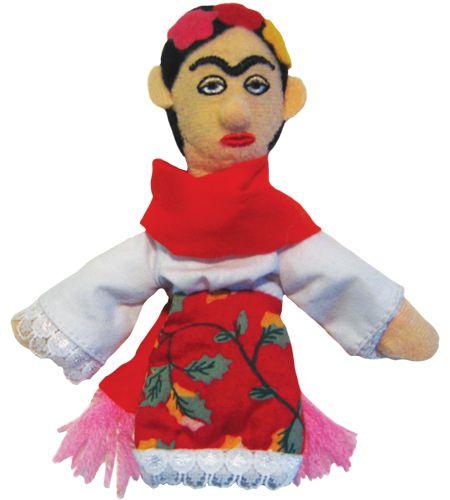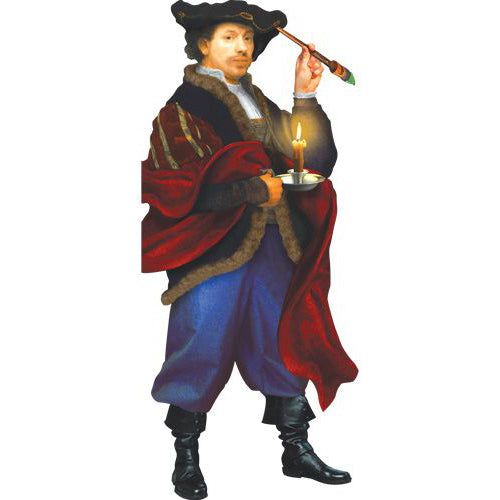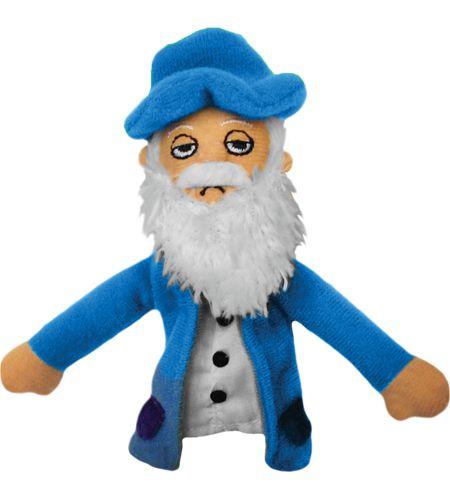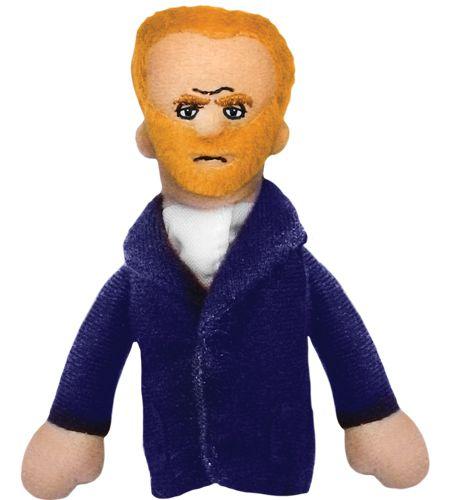Pablo Picasso Die-Cut Note Card with Stickers
Pablo Picasso Die-Cut Note Card with Stickers
The Unemployed Philosopher's Guild
In stock
Couldn't load pickup availability
These die-cut cards are a revolution in stationery. Each card comes with its own unique sticker sheet filled with both funny sayings and quotes and traditional messages like "Happy Birthday" and "Happy Anniversary." Comes with envelope.
- Includes envelope and sticker sheet
Product Details
Product Details
- Product type: Blank Note Card
- Shipping Dimensions: 8.75 × 4.0 (22.2 × 10.2 cm)
- Shipping Weight: 0.13 lb (2.0 oz; 57 g)
- SKU: SKU: SKU010003157
- UPC: 814229005643
In these collections: All Products, Blank Cards, Gifts Under $10, Greeting & Note Cards, Pablo Picasso, and The Unemployed Philosopher's Guild.
Share

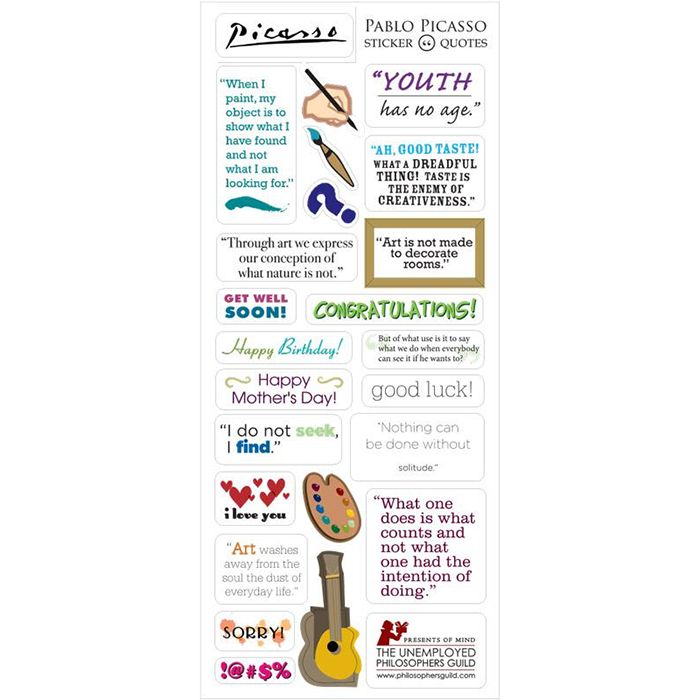

About the Artist
Pablo Picasso
Pablo Picasso (1881 - 1973), the influential 20th-century artist from Spain, revolutionized modern art through his visionary creativity and groundbreaking contributions. From his early prodigious talent to his co-founding of Cubism, Picasso's diverse body of work, including paintings, sculptures, and ceramics, continues to inspire artists worldwide.
More Pablo Picasso
-
Pablo Picasso Plate
Regular price $30.00 USDRegular priceUnit price / per -
Blown Glass Ornament: Pablo Picasso
Regular price $19.95 USDRegular priceUnit price / per -
Artsy Earrings: Cubist
Regular price $25.00 USDRegular priceUnit price / per -
Picasso Bull: A Flipbook
Regular price $5.99 USDRegular priceUnit price / per -
Pablo Picasso Die-Cut Note Card with Stickers
Regular price $3.95 USDRegular priceUnit price / per -
A Short Biography of Pablo Picasso
Regular price $9.95 USDRegular priceUnit price / per -
Pablo Picasso Magnetic Finger Puppet
Regular price $8.95 USDRegular priceUnit price / per

About the Brand
The Unemployed Philosopher's Guild
The origins of the Unemployed Philosophers Guild are shrouded in mystery. Some accounts trace the Guild's birth to Athens in the latter half of the 4th century BCE. Allegedly, several lesser philosophers grew weary of the endless Socratic dialogue endemic in their trade and turned to crafting household implements and playthings. (Hence the assertions that Socrates quaffed his hemlock poison from a Guild-designed chalice, though vigorous debate surrounds the question of whether it was a "disappearing" chalice.)
Others argue that the UPG dates from the High Middle Ages, when the Philosophers Guild entered the world of commerce by selling bawdy pamphlets to pilgrims facing long lines for the restroom. Business boomed until 1211 when Pope Innocent III condemned the publications. Not surprisingly, this led to increased sales, even as half our membership was burned at the stake.
More recently, revisionist historians have pinpointed the birth of the Guild to the time it was still cool to live in New York City's Lower East Side. Two brothers turned their inner creativity and love of paying rent towards fulfilling the people's needs for finger puppets, warm slippers, coffee cups, and cracking up at stuff.
Most of the proceeds go to unemployed philosophers (and their associates). A portion also goes to some groups working on profound causes.
-
Museum Store Association Member
The Museum Store Association supports the cultural non-profit retail industry and the people who work in it.
-
Supports Non-profit Organizations
A portion of proceeds is donated to non-profit organizations. See description for details.
-
Designed in USA
Designed in the USA, with global manufacturing or assembly.
More from The Unemployed Philosopher's Guild
-
Bob Ross Magnetic Finger Puppet
Regular price $8.95 USDRegular priceUnit price / per -
Frida Kahlo Magnetic Finger Puppet
Regular price $8.95 USDRegular priceUnit price / per -
Modern Art Cup
Regular price $19.95 USDRegular priceUnit price / per -
Frida Dreams Mug
Regular price $19.95 USDRegular priceUnit price / per -
Diego Rivera Magnetic Finger Puppet
Regular price $8.95 USDRegular priceUnit price / per -
James Baldwin "Little Thinker" Plush Doll
Regular price $24.00 USDRegular priceUnit price / per -
Rembrandt Die-Cut Note Card with Stickers
Regular price $3.95 USDRegular priceUnit price / per -
Claude Monet Magnetic Finger Puppet
Regular price $8.95 USDRegular priceUnit price / per -
James Baldwin Magnetic Finger Puppet
Regular price $8.95 USDRegular priceUnit price / per -
Vincent van Gogh Magnetic Finger Puppet
Regular price $8.95 USDRegular priceUnit price / per






